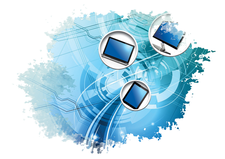Debian meets Mate with the versatile DMDc Live Linux
Debian Meets Mate

Mate isn't just for Mint users. The DMDc project is Mate on top of Debian Testing.
As you learned in a previous article on Cinnamon and Mate elsewhere in this issue, the Mate desktop began life as a fork of Gnome 2. Now that the Gnome project has ceased to develop the official Gnome 2 codebase – and has moved on to the controversial Gnome 3 – users and developers who prefer the Gnome 2 environment have turned their attention to the Mate alternative. The most popular pre-installed Mate distro is the Mint Linux Mate edition; however, Mate is starting to pop up in other places around the Linux universe.
One exciting development for Free Software followers is a new Debian-based Linux alternative with the Mate desktop. DMDc (Debian Mate Desktop Cosillas) [1] boots to a convenient Mate desktop and integrates the vast Debian archive with some smart and useful original applications.
The ISO image of the new DMDc 3.0 version, which is around 1.9GB depending on your hardware architecture, is available at the project website. You can download the ISO image and burn it to a bootable medium. (Remember to burn the file as an ISO image – don't just copy it: see the documentation for your favorite disc utility.)
[...]
Buy this article as PDF
(incl. VAT)
Buy Linux Magazine
Subscribe to our Linux Newsletters
Find Linux and Open Source Jobs
Subscribe to our ADMIN Newsletters
Support Our Work
Linux Magazine content is made possible with support from readers like you. Please consider contributing when you’ve found an article to be beneficial.

News
-
Parrot OS Switches to KDE Plasma Desktop
Yet another distro is making the move to the KDE Plasma desktop.
-
TUXEDO Announces Gemini 17
TUXEDO Computers has released the fourth generation of its Gemini laptop with plenty of updates.
-
Two New Distros Adopt Enlightenment
MX Moksha and AV Linux 25 join ranks with Bodhi Linux and embrace the Enlightenment desktop.
-
Solus Linux 4.8 Removes Python 2
Solus Linux 4.8 has been released with the latest Linux kernel, updated desktops, and a key removal.
-
Zorin OS 18 Hits over a Million Downloads
If you doubt Linux isn't gaining popularity, you only have to look at Zorin OS's download numbers.
-
TUXEDO Computers Scraps Snapdragon X1E-Based Laptop
Due to issues with a Snapdragon CPU, TUXEDO Computers has cancelled its plans to release a laptop based on this elite hardware.
-
Debian Unleashes Debian Libre Live
Debian Libre Live keeps your machine free of proprietary software.
-
Valve Announces Pending Release of Steam Machine
Shout it to the heavens: Steam Machine, powered by Linux, is set to arrive in 2026.
-
Happy Birthday, ADMIN Magazine!
ADMIN is celebrating its 15th anniversary with issue #90.
-
Another Linux Malware Discovered
Russian hackers use Hyper-V to hide malware within Linux virtual machines.

